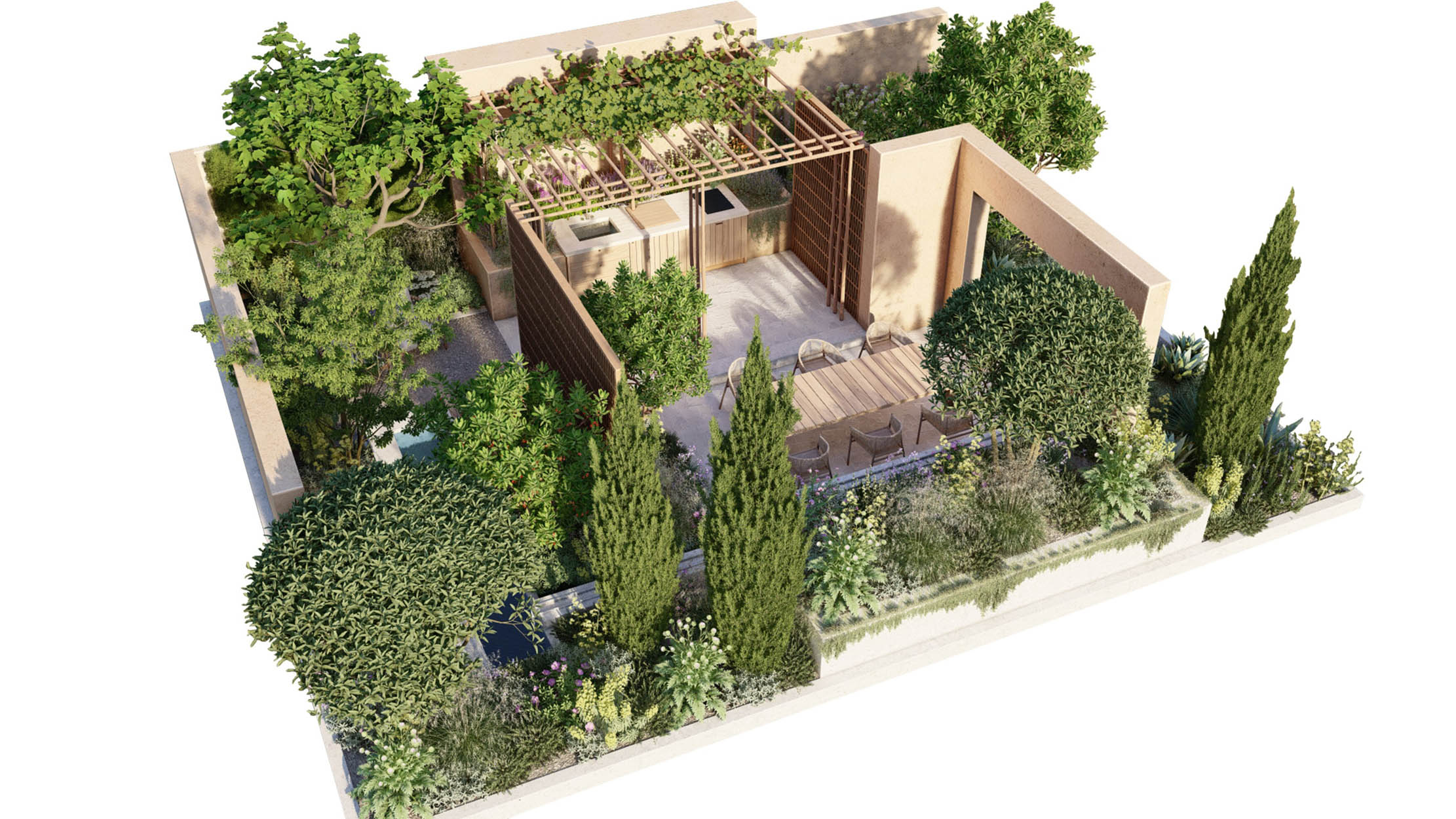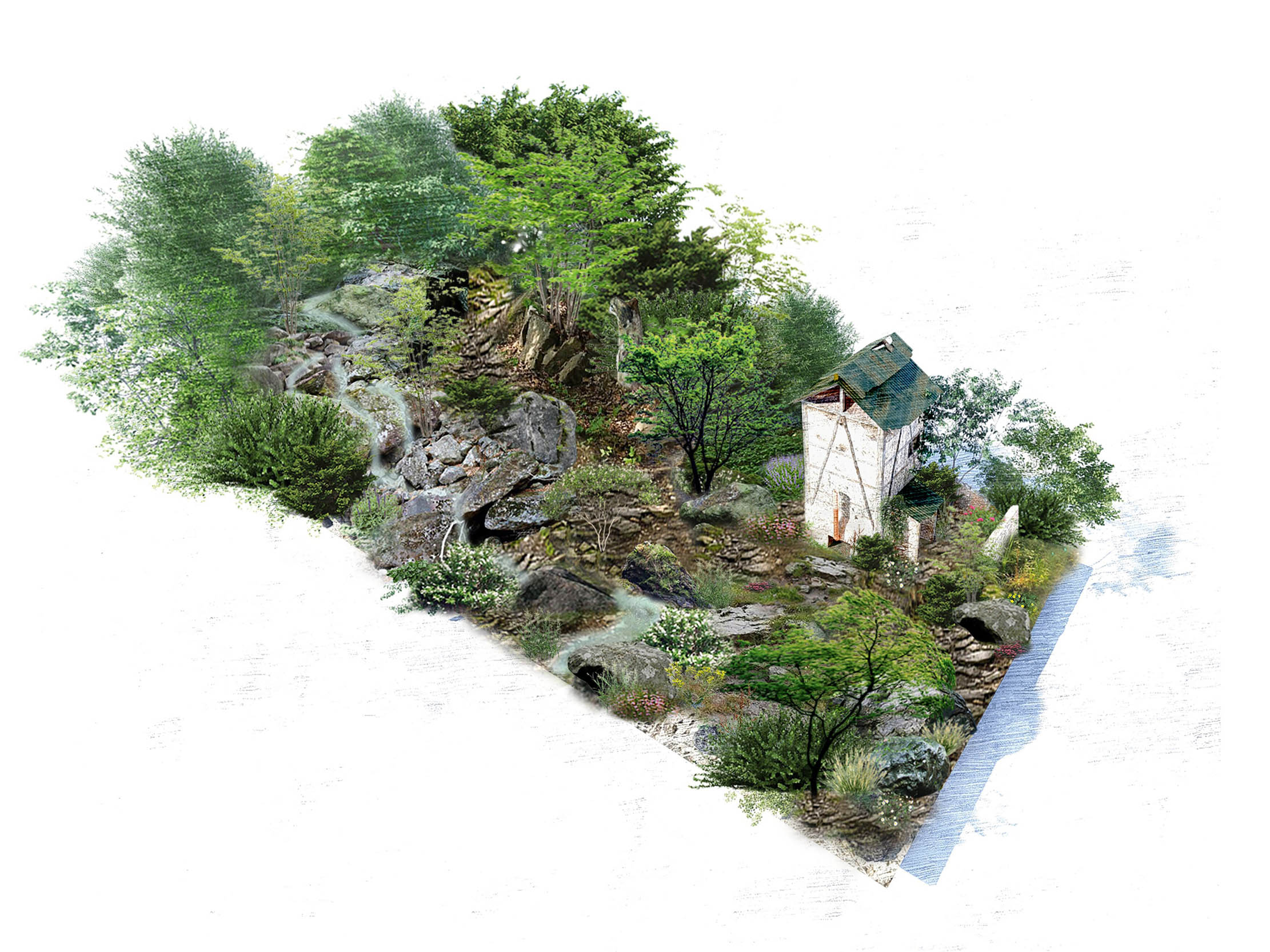2023 Chelsea Flower Show preview: What to expect from the world's greatest garden celebration
Country Life's former gardens editor Kathryn Bradley-Hole writes her 2023 Chelsea Flower Show preview — and she anticipates a confident return to form at Chelsea, with mouth-watering designs for productive gardens, aromatic Mediterranean planting and even a reinterpretation of the rock garden.


The most recent shows at Chelsea revealed the great resilience and resourcefulness of British gardening, defying the challenges of health uncertainties and irregular supply chains. This year, expect to see increased buoyancy, with an energised, confident event of commendable variety — and even, perhaps, an emerging shift of emphasis.
The end of ‘weed gardens’?
Of late, we have become used to laissez-faire, pastoral sensibilities, with an abundance of shaggy hedgerows and flowery meadows. The wild-and-weedy look has gained ground incrementally at the show for many years. ‘Wildernesses’ will be there next week, but, this time, they’re strongly challenged by exhibits rooted in what constitutes a real garden. Shouldn’t it be a place for people, as well as plants and wild creatures?
Soil-to-fork gardens
One theme gaining momentum in real life is the productive garden, with enthusiasts across all age groups. In The Savills Garden, Mark Gregory interprets the trend with ‘a seasonal potager at a country hotel, combining beautiful ornamental and edible planting’.

Occupying one of the largest plots, it has a small building on the boundary, with a kitchen leading into the garden, alongside a verandah-covered dining area. Its Yorkstone courtyard has margins of pretty flowers and a short run of crisp, stilt hedging in hornbeam.
The potager occupies the second half of the garden, with a collection of small raised beds of vegetables, salads and herbs, set out next to a running ‘brook’ crossed by rustic stone bridges. Fruit includes espalier ‘step-over’ apples, a fan-trained pear tree, quince, figs and grapevines. The layout is informal and compact, but it would comfortably translate to many different home-garden settings.
A Mediterranean herb garden
The pleasure of eating outdoors in a more southerly latitude is celebrated in the Hamptons Mediterranean Garden, designed by Filippo Dester.

Its formal, square plot contains a central kitchen/bar and adjacent dining furniture, surrounded by Mediterranean trees and shrubs, such as slender cypresses, lemons, figs, myrtle, lavender and cistus.
Exquisite houses, the beauty of Nature, and how to get the most from your life, straight to your inbox.
Culinary herbs include rosemary, thyme, oregano, fennel, chives, mint and sage. If the sun kindly shines on the show, this aromatic, sophisticated garden, with its crisp water canal, will have considerable allure.

Jihae Hwang’s A Letter from a Million Years Past
Efficacious herbs get a vastly different treatment in Jihae Hwang’s A Letter from a Million Years Past. This is a piece of ancient landscape, where some 200 tons of Scottish basalt form a magnificent hillside in miniature, imitating a slice of South Korea’s majestic eastern Jiri Mountains. The region supports some 1,500 native Korean plants of medicinal value, many of which are now scarce.

A particular feature here is a traditional Korean herb-drying tower, a slender, but tall building with a pitched roof that allows the passage of air, yet keeps out the rain. The Korean artist’s previous exhibit at Chelsea was the memorable DMZ Garden in 2012, a poignant and remarkably detailed expression of the demilitarised zone between North and South Korea. This time, she draws dramatic attention to ancient knowledge and the curative properties of herbs in her homeland. It is literally taking Chelsea’s 100-year-old tradition of rock-garden displays into new territory.
Gardens for mental health
Health and wellbeing-associated charities have a strong presence among the sponsors and — still with rocks — a tough, stony ‘journey’ is presented by Darren Hawkes in The Samaritans’ Listening Garden, celebrating the charity’s 70th anniversary. On a rectangular site, the designer envisages a ‘brutal and foreboding’ entrance at one end, with steel girders and cables suspending menacing chunks of concrete. Relief is found beyond, where the scene opens out into a welcoming sanctuary, the listening area. Its gurgling water flows between a smoother, brighter rockscape, with some nice trees and contemporary drifts of grasses and perennials growing out of the stony fissures.

The calming influence of trees and abundant woodland flowers is presented in Myeloma UK’s A Life Worth Living Garden, by Chris Beardshaw. Its two neo-Classical pavilions are reached via a meandering path of charred oak, whereas a more open part of the garden includes crisp yew hedging and a traditional, colourful border of early-summer flowers.
A glass stairway leads up to a cantilevered viewing platform in the heart of Cavernoma On My Mind, a garden by Taina Suonio and Anne Hamilton for The Cavernoma Society. It gives a bird’s-eye view over a small and pretty square plot, including shrub roses, salvias, peonies, herbs and other reliable Chelsea favourites, interwoven with dainty grasses and wildflowers.

An enormous amount of symbolism and messaging has been put into the choice and location of each plant. That will be lost on most visitors, of course, who are looking for overall effect, but the contemporary belvedere will literally lift this garden into another dimension.
Woodland gardens
Thomas Hoblyn’s Boodles British Craft Garden draws inspiration from mid-19th-century Pre-Raphaelite ideas of English woodland. Its naturalistic planting includes martagon lilies and a connoisseur’s range of ferns.
The crafts element includes a metal arbour modelled on branches, a terrace of fossil-rich Chatsworth limestone and a ‘floating’ pool by imaginative fountain creator Bamber Wallis.
Iris-filled gardens
Old-fashioned bearded irises can be tricky to bring to the show, having a delicacy in their quivering petals. The tougher, highly bred modern varieties tend to have greater weather resistance; yet, for many, the subtle hues and potential fragility of the best mid-20th-century varieties put them in a class of their own.
In this respect, irises bred by the artist Cedric Morris (1899–1982), in his Suffolk garden at Benton End, have special appeal. Morris bred them, in his own words, for ‘form, poise, colour, texture and general design’.
One of the best gardens at the show — but it might be a bit of a slug magnet
More irises are on show in The Nurture Landscapes Garden, where Sarah Price weaves them among grasses, magenta Gladiolus species, pastel-hued poppies and tall stems of dark-bronze Aeonium arboreum, a statuesque tender succulent, native to Macaronesia. Silver foliage illuminates the garden here and there, via the olive-like shrub Elaeagnus ‘Quicksilver’ and succulent Cotyledon species.

This exhibit may well provide some of the most captivating and original views in the show, but if you replicate it at home, do put it in a slug-proof location. A combination of herbaceous hideaways described as ‘dishevelled, with Nature encroaching at the edges’ and tender succulents is, to molluscs, a five-star hotel with Michelin-starred restaurant attached. Real Nature can be a bind sometimes, although part of the art of Chelsea derives from seeing the impossible made possible, even for a fleeting moment.
More things to see at Chelsea 2023
- In the Grand Pavilion, ferns and tree ferns (Dryopteris and Cyathea species) gracefully ornament a number of gardens and nursery exhibits
- Caley Brothers are gourmet mushroom-growers selling a variety of fresh mushrooms and grow-at-home kits. Now run by sisters Jodie and Lorraine, the original family business was set up by their grandparents in the 1950s

- Caribbean floral displays from Trinidad & Tobago, Barbados and Grenada invigorate the marquee with tropical warmth in heliconias and torch ginger
- Hoyland Plant Centre further warms things up with brilliant displays of clivia, agapanthus, amarine and nerine
- New exhibitor Lincolnshire Pond Plants shares the wonders of water lilies for ponds of all sizes
- Derbyshire Bonsai and David Cheshire Nurseries, both Gold medal winners in 2022, return with their diminutive trees
- At the central Monument site, the RHS celebrates Women in Gardening, including Gertrude Jekyll, a guiding force in matters horticultural for the first three decades of Country Life’s existence

Picture credits: Darren Hawkes; Mark Gregory; Filippo Dester; Sarah Price; Getty; Jihae Hwang; Some images are computer generated.
